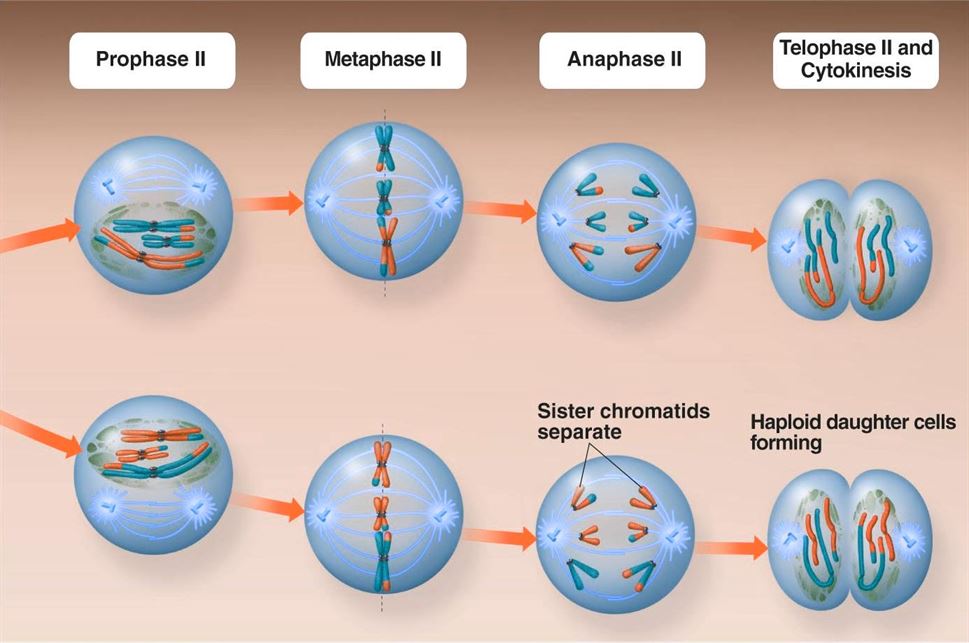Meiosis: Easy Cell Division Guide

The intricacies of cellular biology have long fascinated scientists and researchers, and one of the most critical processes in this field is meiosis. Meiosis is a type of cell division that reduces the chromosome number by half, resulting in the production of gametes, such as sperm and eggs, which are essential for sexual reproduction. In this comprehensive guide, we will delve into the world of meiosis, exploring its stages, mechanisms, and significance in the realm of cellular biology.
To begin with, it’s essential to understand the context in which meiosis occurs. Meiosis is a specialized type of cell division that takes place in the reproductive cells of organisms, including humans, animals, and plants. The primary purpose of meiosis is to generate genetic diversity by shuffling the genetic material and reducing the number of chromosomes in the reproductive cells. This process is crucial for the survival and evolution of species, as it allows for the creation of unique combinations of genetic traits that can adapt to changing environments.
One of the most distinctive features of meiosis is its complex and highly regulated process. Meiosis consists of two successive cell divisions, meiosis I and meiosis II, each with its own set of stages and mechanisms. Meiosis I is the first division, where homologous chromosomes pair up and exchange genetic material through a process called crossing over. This stage is critical for increasing genetic diversity, as it allows for the creation of new combinations of genetic traits. Meiosis II, on the other hand, is similar to mitosis, where sister chromatids separate and move to opposite poles of the cell.
To illustrate the meiotic process, let’s consider a step-by-step example. Imagine a cell with four chromosomes, each consisting of two sister chromatids. During meiosis I, the homologous chromosomes pair up, and crossing over occurs, resulting in the creation of new combinations of genetic traits. The paired chromosomes then separate, and each member of the pair moves to opposite poles of the cell. In meiosis II, the sister chromatids separate, resulting in the production of four haploid cells, each with a unique combination of genetic traits.
| Stage | Meiosis I | Meiosis II |
|---|---|---|
| Prophase | Homologous chromosomes pair up and crossing over occurs | Sister chromatids separate |
| Metaphase | Paired chromosomes align at the metaphase plate | Sister chromatids align at the metaphase plate |
| Anaphase | Paired chromosomes separate | Sister chromatids separate |
| Telephase | Nuclear envelope reforms, and cytoplasm divides | Nuclear envelope reforms, and cytoplasm divides |

In addition to its role in sexual reproduction, meiosis has significant implications for our understanding of genetics and evolution. The process of meiosis allows for the creation of genetic diversity, which is essential for the survival and adaptation of species. By shuffling the genetic material and reducing the number of chromosomes, meiosis increases the chances of creating unique combinations of genetic traits that can adapt to changing environments.
What is the primary purpose of meiosis?
+The primary purpose of meiosis is to generate genetic diversity by shuffling the genetic material and reducing the number of chromosomes in the reproductive cells.
What is the difference between meiosis I and meiosis II?
+Meiosis I is the first division, where homologous chromosomes pair up and exchange genetic material, while meiosis II is similar to mitosis, where sister chromatids separate and move to opposite poles of the cell.
Why is meiosis important for sexual reproduction?
+Meiosis is essential for sexual reproduction, as it allows for the creation of genetic diversity and the production of healthy gametes, which are necessary for the survival and evolution of species.
In conclusion, meiosis is a complex and highly regulated process that plays a critical role in the production of gametes and the creation of genetic diversity. By understanding the mechanisms and significance of meiosis, we can gain valuable insights into the world of cellular biology and the intricacies of genetic inheritance. Whether you’re a student, researcher, or simply interested in the wonders of cellular biology, meiosis is a fascinating topic that offers a wealth of knowledge and understanding.



